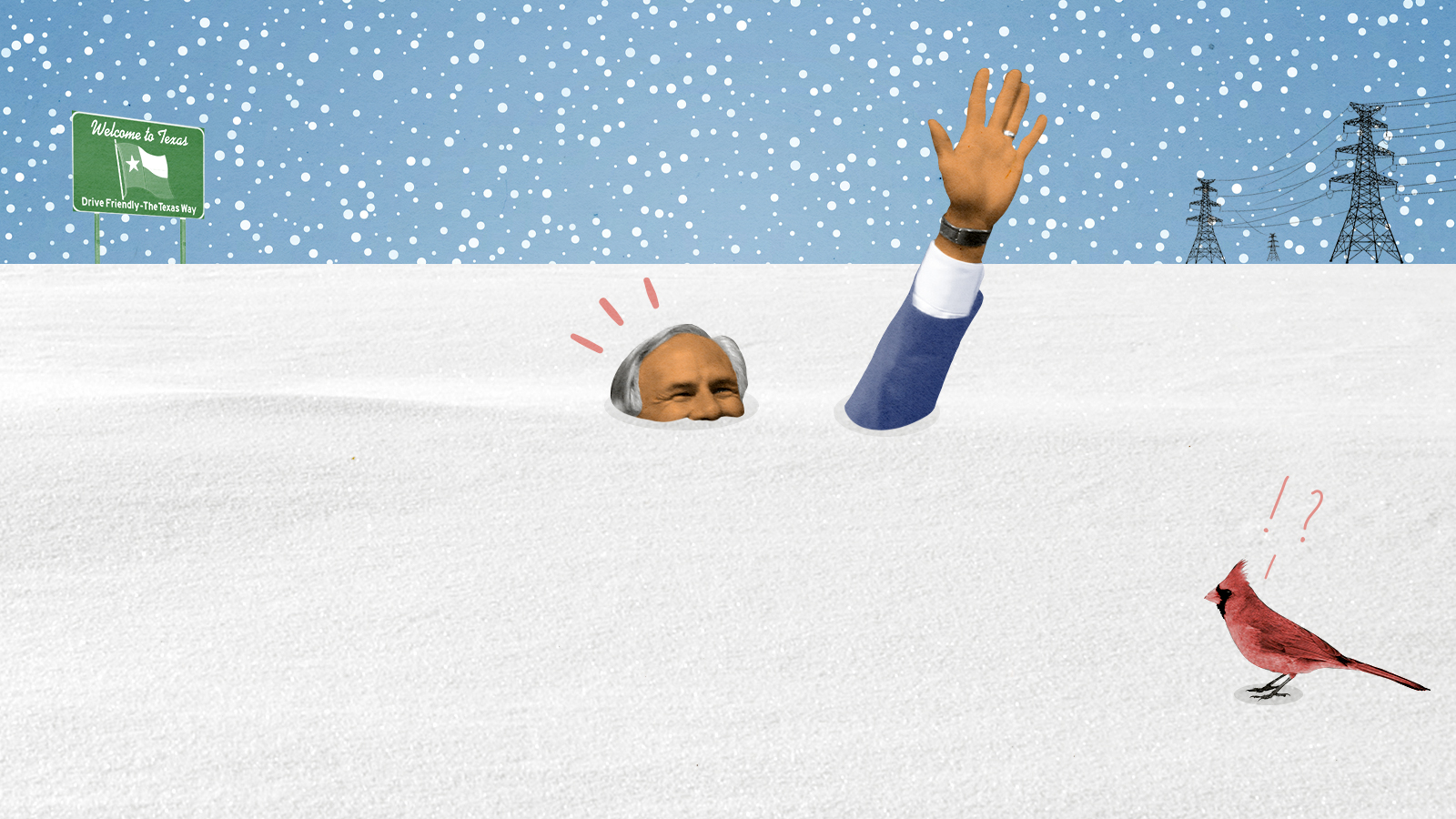Should I Get Him a Father's Day Gift if the Baby Isn't Born Yet
Skip to headerSkip to main contentSkip to footer
Feature
A brief history of the Christmas present
Every year, Americans give an average of 24 Christmas gifts per person, with a total value of $65 billion. Why?
How did the custom get started? Christians see gift giving as a symbolic homage to the Three Wise Men's tributes to the baby Jesus. In the New Testament, the Magi are described as honoring the newborn Savior with valuable gifts of gold, frankincense, and myrrh. But gift giving this time of year dates to an even older tradition. Pagans in Europe and the Middle East gave presents at several winter festivals, including Saturnalia, a raucous Roman festival in honor of Saturn, god of agriculture, which began on Dec. 17. During this weeklong holiday in the cold, dark dead of winter, pagans would lift their spirits by drinking to excess and giving one another gifts, such as pottery figurines, edible treats like fruit and nuts, and festive candles. Revelers greeted one another with a joyful "Io Saturnalia!" — the ancient Roman equivalent of "Merry Christmas!"
What happened to Saturnalia? Early Christian leaders phased it out. They considered it their religious duty to eradicate the existing pagan culture, but knew that dumping the beloved festival would cause a backlash. So in the 4th century, they created a rival festival to mark Jesus' birth: Christmas. The Bible doesn't explicitly state the date on which Jesus was born, and many theologians place his birth in the spring. But church leaders pushed the date back a few months to Dec. 25 and borrowed some Saturnalia rituals for their own festival to keep the public happy. "If Christianity moves Christmas into December, you can then fade out these other festivals," said archaeologist Sam Moorhead. "You can attempt to move on as if nothing has happened." The festival quickly spread across the Christian world, but some pious believers refused to join in the holiday cheer.
Who were these Scrooges? Our Pilgrim forefathers. Although today's commercialized Christmas is considered distinctly American, the festival was banned in the nation's earliest days. New England's Puritan leaders considered it a pagan or papist abomination, and any citizen found celebrating around Dec. 25 would be sternly reprimanded. But when Christmas celebrations became legal in the 1680s, gift giving boomed. Rural Americans carved wooden toys and made pieces of needlework in the agricultural offseason to give to family members and neighbors. The Industrial Revolution saw those handmade items replaced with mass-manufactured trinkets and toys. By 1867, the holiday present industry was healthy enough for Macy's in New York City to keep its doors open until midnight on Christmas Eve for the first time.
(This article originally appeared in The Week magazine. Try 4 risk-free issues, and stay up to date with the week's most important news and commentary.)
Did everyone get in the spirit? Not exactly. By 1904, one writer in Harper's Bazaar was already lamenting the rampant commercialism of the day. "Twenty-five years ago, Christmas was not the burden that it is now," wrote Margaret Deland. "There was less haggling and weighing, less quid pro quo, less fatigue of body, less wearing of soul; and, most of all, there was less loading up with trash." Such complaints prompted the creation of organizations like SPUG, the Society for the Prevention of Useless Giving, whose members included Anne Morgan, the daughter of banker J.P. Morgan, and former President Theodore Roosevelt. But retailers were unabashed. The ultimate gift giver, Santa, started appearing in advertisements, and the dreaded "Christmas creep" began, with stores advertising their Christmas wares earlier each year. For toy makers and sellers, the holiday season now begins in February.
Why February? That's when tens of thousands of toy industry representatives gather at New York City's annual American International Toy Fair, where they try to figure out which toy will top children's wish lists 10 months later. Beanie Babies made their public debut at the fair in 1993, and the best-selling Furby electronic pet first appeared there in 1998. This year's must-have toy is Disney's $119 Frozen Castle and Ice Palace Playset, which has already sold out in much of the country and is going for more than $400 on eBay. With children's toys selling at such high prices, it's perhaps no surprise that the average American is expected to spend $720 on gifts this year, according to the National Retail Federation.
Isn't that a bit excessive? Scroogenomics author Joel Waldfogel certainly thinks so. He's lobbied for Americans to abandon Christmas gift giving, which he calls an "orgy of wealth destruction." Waldfogel notes that one-third of holiday spending still isn't paid off two months after Christmas. Worse, most of us don't even like many of the presents we receive. The "deadweight loss" of sweaters never worn and books never read equates to about 18 percent of Christmas spending — a staggering $12 billion. Present buying may boost the economy, but Waldfogel argues that "if the spending we engage in doesn't produce any satisfaction, then it's hardly a measure of well-being." Worse, he contends, it goes against the very spirit of Christmas. Isn't it supposed to be the thought that counts? "The thought,'' he says, "doesn't need to be communicated with a lot of money."
Santa: The evolution of a gift giver Santa Claus has undergone many transformations over the centuries. The jolly rotund gent started out as St. Nicholas of Myra, a real-life, 4th-century Byzantine monk who handed out bags of money to the poor. St. Nicholas was introduced to the U.S. in the early 1800s, and quickly mutated into a "right jolly old elf" thanks to the 1823 poem "A Visit From St. Nicholas," commonly known as "'Twas the Night Before Christmas." By 1890, children could meet live "Santas" at department stores — the new name having been taken from the Dutch version of Saint Nicholas, Sinterklaas. In the 1930s, Santa's bearded face was strewn over advertisements for Coca-Cola, solidifying his status as Yuletide's main man. These days, Santa is undergoing a new, politically correct transformation: Worried that his obesity sets the wrong impression, some greeting card companies have started to feature a leaner, healthier Santa on their Christmas cards.
Recommended
Snowstorm strands thousands of motorists for 10-plus hours south of D.C.

Snowpocalypse Now
Snowstorm strands thousands of motorists for 10-plus hours south of D.C.
Doom and gloom in academe

Doom and gloom in academe
The year in good news

The year in good news
Ringing in the new

Feature
Ringing in the new
Most Popular
California deputy DA opposed to vaccine mandates dies of COVID-19

covid-19
California deputy DA opposed to vaccine mandates dies of COVID-19
Why did Trump cancel his Jan. 6 press conference?

change of plans
Why did Trump cancel his Jan. 6 press conference?
Greg Abbott's ice-cold corruption

Greg Abbott's ice-cold corruption
Skip to headerSkip to main contentSkip to footer
Should I Get Him a Father's Day Gift if the Baby Isn't Born Yet
Source: https://theweek.com/articles/441360/brief-history-christmas-present
0 Response to "Should I Get Him a Father's Day Gift if the Baby Isn't Born Yet"
Post a Comment